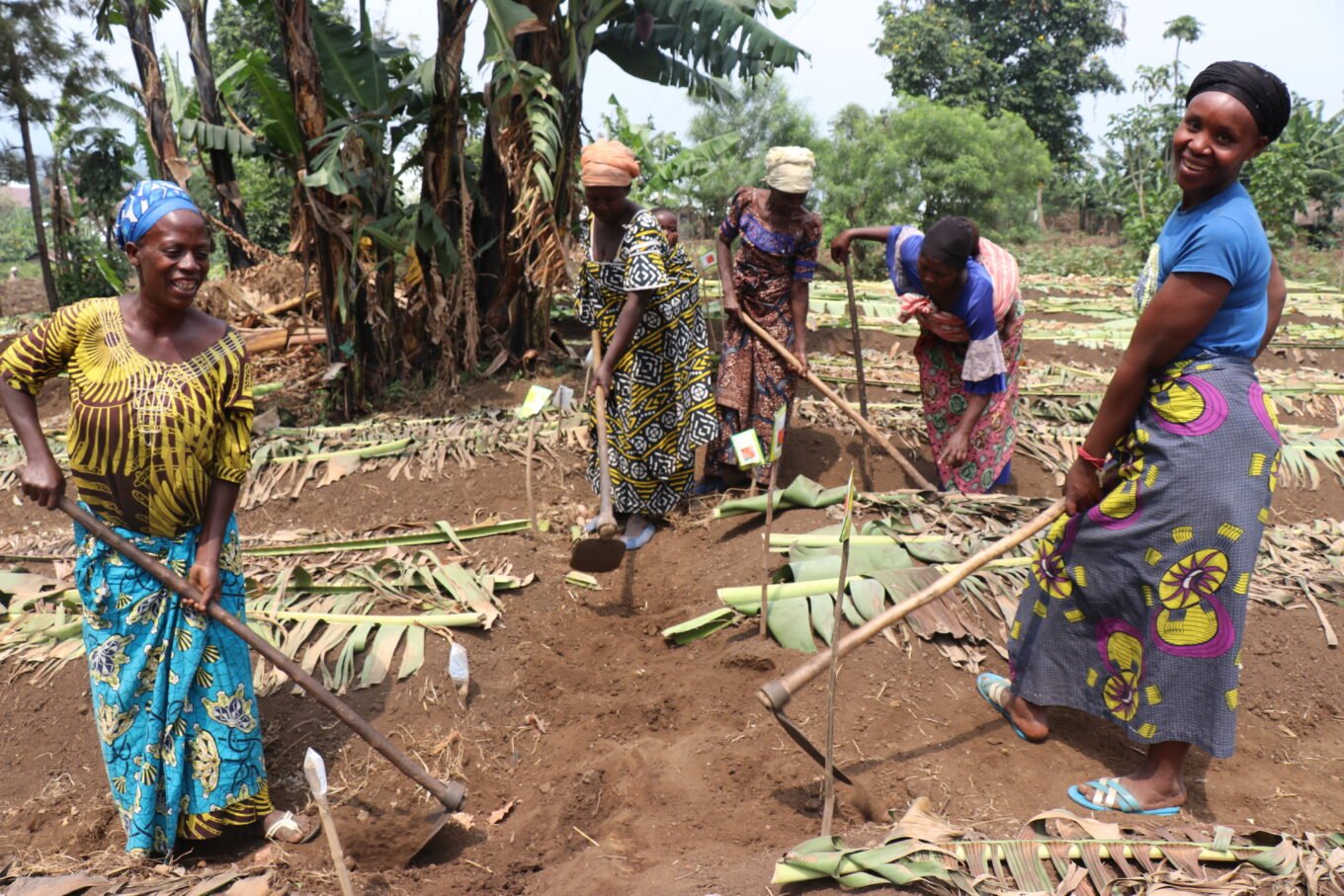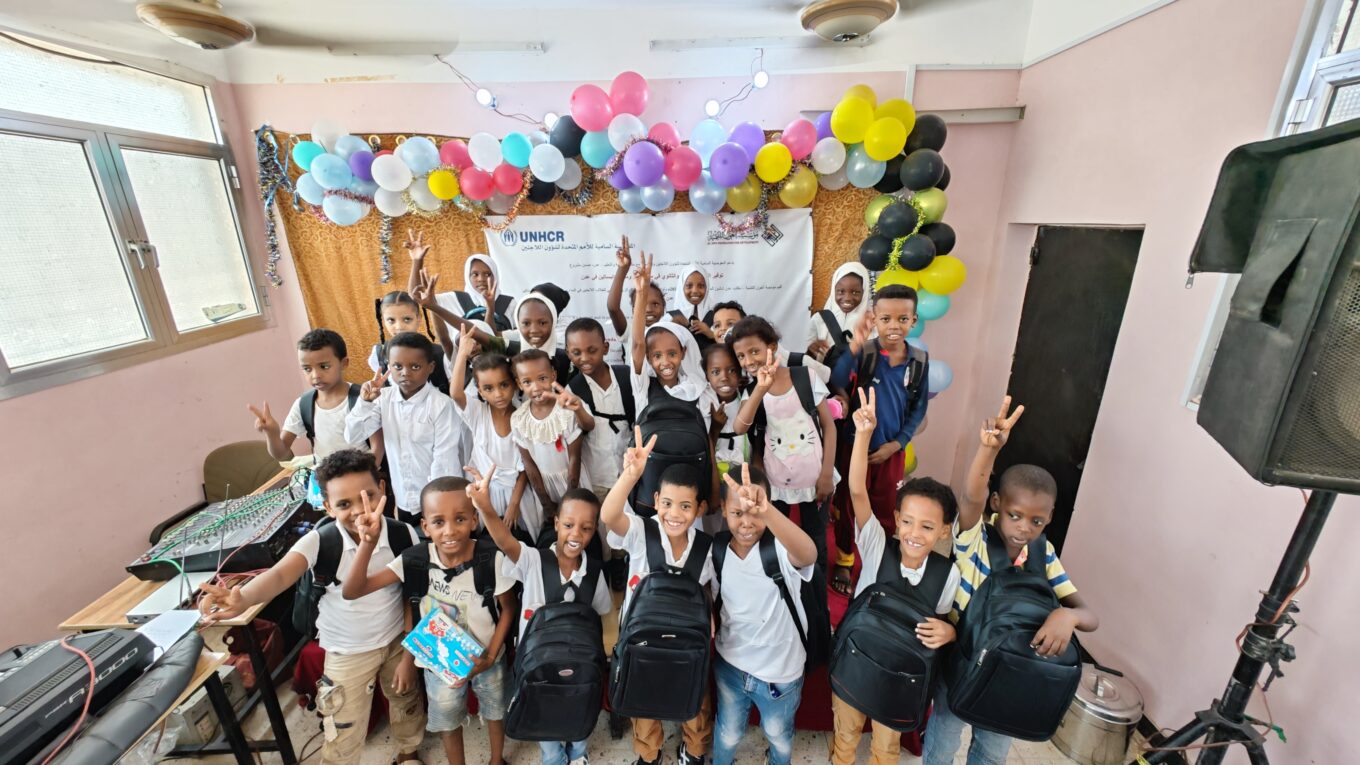by Sajjad Malik, UNHCR’s Director for Resilience and Solutions

Policies towards the management of mass forced displacement have significantly evolved over the past decades. While in the past emphasis lay on camps serviced by humanitarian actors, we now know that inclusion of refugees, IDPs, and stateless people in the hosting context is not only a good option, but a necessity to achieve better protection outcomes and to lay the ground for solutions. We also know that this requires more than humanitarian aid, and that the forcibly displaced need to be included in international development co-operation programmes.
Forcibly displaced have a higher vulnerability to external shocks
Refugees, internally displaced and stateless populations have specific and higher vulnerabilities compared to hosting communities, which risk being amplified by economic shocks and other disruptive events. Most refugees who have access to work are informally employed, thereby vulnerable to volatility and loss of employment, and to suffering further shocks to their well-being.
Such specific vulnerabilities led to severe socio-economic setbacks during the COVID-19 pandemic. Phone surveys measuring the impacts of COVID-19 show significant deterioration in refugees’ access to health and education services when compared to host communities. Similar cutbacks were reported in their wages and employment, non-labour income, and food security. For example, in Uganda, refugee poverty increased to 52% in October/November 2020 from 44% before the outbreak in March 2020. During this time, 89% of households experienced declining income, while 85% did not have enough to eat due to a lack of money or other resources. In Kenya, the employment gap between refugees and nationals was considerable even before the pandemic, and it remained large throughout the pandemic due to widespread job losses. Notably, employment recovery has been slower for refugees than for nationals.
What conditions enable inclusion?
Supporting the inclusion of refugees in national social protection systems offers a pragmatic way to overcome some economic vulnerabilities associated with forced displacement. Inclusion builds the resilience of forcibly displaced people, an important milestone in access to durable solutions and implementation of the Global Compact on Refugees.
A recent OECD report, Social protection for the forcibly displaced in low- and middle-income countries: A pathway for inclusion, aligns with UNHCR’s Global Roadmap for Inclusion in Social Protection Systems and broadly affirms our approach: Inclusion in social protection systems, backed by international development investments, offers promising alternatives to humanitarian assistance. Most importantly, the study contributes towards establishing a baseline for access to social protection by displaced populations.
To inform UNHCR’s advocacy on behalf of forcibly displaced persons, we have identified a number of enabling factors that underpin refugee inclusion in national social protection systems, including:
- A national policy and legal framework with explicit rights for refugees and IDPs to social protection and work (de jure inclusion), coupled with the actual ability to access benefits (de facto inclusion)
- International financing made available to facilitate the inclusion of forcibly displaced and host communities in government social protection programmes
- Sufficient operational and staffing capacity of government agencies at central and local levels
- Inclusion of refugees and IDPs in government data systems (e.g., social registries and socio-economic surveys)
- The ability of refugees and IDPs to meet social protection eligibility criteria, e.g., having ID documents
- Accompanying and monitoring efforts to clarify the social protection programme processes and commitments/conditionalities, to ensure clear communication with host communities, and to assess the actual rate of inclusion and status of social protection beneficiaries.
And which ones obstruct?
A range of operational barriers often hampers the de facto access for refugees and others forcibly displaced, including:
- Lack of government financial resources to scale up social protection programmes to include refugees
- Heavy bureaucratic procedures and limited government capacity to process asylum claims in a reasonable timeframe
- Lack of or delayed access to civil documentation (e.g., ID cards, birth certificates, residence attestations)
- Limited financial inclusion, e.g., access to bank accounts is often restricted due to documentation, language and information gaps
- In the absence of sustainable funding, the duration of social protection inclusion risks to be limited to the duration of the project
- Weaknesses in the design of internationally funded projects resulting in protection risks and feasibility challenges
- Lack of awareness and discrimination by public service providers and local authorities
Fundamentally, inclusion in social protection needs to be accompanied by economic interventions, such as financial inclusion and enterprise development. This potentially offers the opportunity for displaced persons to exit out of non-contributory social benefits, move to stable job opportunities, and become active contributors to the national fiscal system.
UNHCR works with development actors to achieve the inclusion of forcibly displaced persons in national plans and development programmes. And our strong partnerships with key development actors are critical to the process. For example, the World Bank’s dedicated host community and refugee IDA sub-window funds numerous projects including refugees into national social protection systems. Germany’s BMZ is encouraging projects financed by their dedicated financial instrument for forced displacement to support inclusion in national systems.
How do forcibly displaced persons and hosts benefit from being included?
For displaced persons, protection against life’s risks (such as sickness, maternity, old age and occupational injury) not only improves their income security and reduces household poverty; it also ultimately provides host countries with more productive, healthy and employable workers.
Access to social protection and employment in the host country supports durable solutions. The participation of refugees and asylum-seekers in the local economy is a step towards increasing their socio-economic integration, opening doors to new opportunities and reducing aid dependency.
When we focus not only on refugees’ access to social services, but also on how they can secure formal employment, refugees can contribute to the fiscal and social security systems of their host country. For example, urban health insurance projects in Kenya, Rwanda and Ghana have increased the capacity of refugees to pay into national health insurance schemes.
Access to additional financing from bilateral development partners and multilateral development banks can incentivize host governments to advance the inclusion of refugees and IDPs. Such resources also contribute to strengthening the national social protection system as a whole, thereby achieving progress towards sustainable development goals.
UNHCR, humanitarian and development partners must join up our approaches further. Not only among ourselves, but importantly also with host governments, financing providers, civil society and the displaced themselves. Policy coherence between host governments and the international community will be critical for achieving the goal of the inclusion of refugees in national systems.
Inclusion is not an end-goal in itself, but a step towards better protection, more socio-economic development opportunities, and durable solutions to end displacement. It can be a win-win for hosting countries and the forcibly displaced themselves. In some contexts, inclusion will be fully possible – looking at the promising example of the European Union’s temporary protection directive for those fleeing the war on Ukraine, while in other contexts inclusion in specific sectors will be feasible. In others, institutional capacity or political constraints will inevitably not allow for the inclusion of refugees, IDPs, or stateless persons. Pragmatism, sensitivity to context, and impact monitoring will allow us to use inclusion approaches as one tool in a wider toolbox to respond to forced displacement.
Inclusion is not an end-goal in itself, but a step towards better protection, more socio-economic development opportunities, and durable solutions to end displacement.

